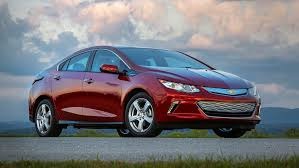What is the difference between Chevy Volt and Bolt
Electric vehicles have become a major part of the modern automotive landscape, and Chevrolet has been one of the key players in this transformation. Among its electric offerings, the Chevy Volt and the Chevy Bolt often get compared — and while their names sound similar, the two vehicles are actually quite different in design, purpose, and performance.
In simple terms, the Chevy Volt is a plug-in hybrid (PHEV) that can run on electricity and switch to gasoline when needed, while the Chevy Bolt is a fully electric vehicle (BEV) that relies solely on battery power. This fundamental distinction changes how each car drives, charges, and fits into your daily life. Let’s explore their key differences in detail.
The Core Difference: Plug-in Hybrid vs. All-Electric
The Chevy Volt was engineered as a bridge between traditional gas-powered cars and full EVs. It primarily operates on electric power drawn from its onboard battery. However, when the battery charge drops below a certain point, a gasoline engine automatically starts and acts as a generator to power the electric motor. This setup allows the Volt to continue driving even when the battery is depleted, giving it the convenience of long-distance travel without constant charging.
The Chevy Bolt, on the other hand, is a pure electric car. It doesn’t have a gasoline engine at all. The Bolt’s powertrain relies entirely on its large lithium-ion battery and electric motor, meaning once the charge runs out, you must recharge it to keep driving. This makes the Bolt a true zero-emission vehicle.
Range and Driving Distance
Range is one of the biggest differences between these two vehicles. The Chevy Volt can travel about 50–53 miles purely on electricity, depending on the model year. After that, the gasoline engine extends the total range to over 400 miles with a full tank and charge combined. This dual capability made the Volt appealing to drivers who wanted the benefits of electric driving without worrying about running out of power.
In contrast, the Chevy Bolt delivers an impressive 200–260 miles of all-electric range on a single charge, depending on the year and trim level. This makes the Bolt ideal for longer daily commutes or road trips — as long as charging stations are available along the route. While it lacks a gas backup, its longer electric range allows for entirely fuel-free driving for most users.
Charging vs. Fueling
With the Chevy Volt, charging is quick and easy due to its smaller battery. Most owners plug in at home overnight using a standard 120-volt outlet or a faster 240-volt charger. Because the Volt can switch to gasoline power, running out of charge isn’t a major concern — you can simply refuel at any gas station and continue driving.
The Chevy Bolt, being fully electric, requires more consistent access to charging infrastructure. Home charging is the most convenient option, but for road trips, DC fast chargers are essential. These can recharge the battery to around 80% in about 30–45 minutes, depending on the charger and conditions. Unlike the Volt, you can’t rely on gasoline to extend your trip — planning ahead for charging stops is key.
Cost of Ownership and Maintenance
One of the main benefits of both vehicles is their lower operating cost compared to traditional cars. Electricity is typically cheaper than gasoline per mile driven, and maintenance costs tend to be lower because there are fewer moving parts.
However, there are differences:
- The Chevy Volt, with its combination of electric and gasoline systems, still needs regular engine maintenance such as oil changes, filters, and occasional engine servicing.
- The Chevy Bolt, having no engine at all, eliminates these maintenance tasks entirely. There’s no oil to change, no transmission fluid, and fewer parts that wear out. This makes the Bolt cheaper to maintain in the long run.
Design, Comfort, and Interior Space
The Volt was designed as a sleek, compact liftback with a focus on aerodynamic efficiency. It offers comfortable seating for four adults and a moderate cargo area. Because of the battery placement and gasoline components, the Volt’s interior feels more like a traditional sedan.
The Bolt, on the other hand, features a taller hatchback design that maximizes headroom and cargo space. The battery is stored under the floor, which helps free up interior volume. The result is a more spacious, upright feel — closer to a small crossover than a sedan.
In terms of performance, both vehicles deliver instant torque typical of electric motors, offering quick acceleration and smooth handling. The Bolt, with its all-electric powertrain, feels especially responsive and agile in city driving.
Production and Availability
The Chevy Volt was produced from 2010 to 2019, across two generations. Chevrolet discontinued it as the company shifted its focus toward fully electric vehicles. Today, the Volt is available only on the used car market, where it remains a popular choice for drivers seeking an affordable entry into electrified driving.
The Chevy Bolt debuted in 2017 and continues to be Chevrolet’s flagship electric car. It has faced some challenges, including battery recalls and temporary production pauses, but the model remains central to GM’s EV lineup. In fact, Chevrolet has announced plans to continue the Bolt name in future EV models with improved battery technology and design.
Which One Should You Choose?
The choice between the Volt and the Bolt largely depends on your driving habits and access to charging.
- Choose the Chevy Volt if:
- You drive shorter distances daily but occasionally take long trips.
- You don’t always have access to charging infrastructure.
- You want the comfort of gasoline backup without giving up electric driving.
- You drive shorter distances daily but occasionally take long trips.
- Choose the Chevy Bolt if:
- You’re ready to commit to a fully electric lifestyle.
- You have access to reliable home or public charging.
- You prefer lower maintenance costs and zero tailpipe emissions.
- You’re ready to commit to a fully electric lifestyle.
For city commuters with access to charging and predictable routes, the Bolt is the cleaner, simpler choice. For drivers who travel longer distances or live in areas with limited charging options, the Volt remains a highly practical hybrid alternative.
Final Thoughts
Although their names sound alike, the Chevy Volt and Chevy Bolt represent two different eras of electric mobility. The Volt blended electricity and gasoline to ease the transition toward EVs, offering flexibility and freedom from range anxiety. The Bolt, meanwhile, embodies the next step — a fully electric vehicle designed to eliminate fossil fuels entirely.
In short:
- The Volt combines electric efficiency with gasoline backup, ideal for mixed driving needs.
- The Bolt delivers a longer, all-electric range with no fuel dependency and lower long-term costs.
Whether you value the Volt’s versatility or the Bolt’s purity of purpose, both models showcase Chevrolet’s early leadership in sustainable driving — each playing a vital role in paving the road to an all-electric future.






